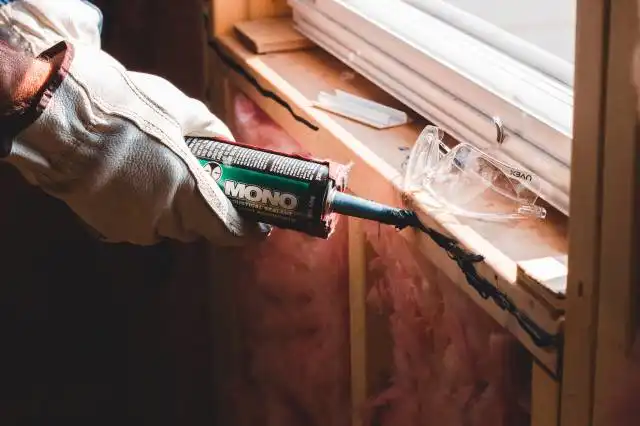Start a Dart Store
Bullseye: Unleashing Your Entrepreneurial Spirit with a Dart Store
| Updated


DART STORE
Strike bullseye with your entrepreneurial ambitions with a dart store! This distinctive business concept revolves around selling darts and dart-related accessories, like dartboards, dart cases, and unique throw line markers. Breathe life into the underappreciated art of dart throwing and create a haven for all lovers of this classic pub game. A dart store fuels the fiery passion that enthusiasts have for the game, simultaneously securing a steady revenue stream for your business venture.
Jump to Business Plan
RELATED BUSINESS IDEAS
Browse ALL Arts & Crafts Business Ideas
Discover Your Perfect Domain
Unlock the door to your online success with our hand-picked selection of premium domain names. Whether you're starting a new venture or rebranding an existing one, the right domain can set the tone for your digital presence. Browse through our curated list, each with its unique potential to enhance your brand's visibility and credibility.
DART STORE MINI BUSINESS PLAN
This a quick reality check to help you identify the strengths and weaknesses of your business concept before you dive in.
Expected Percent Margin:
- Gross Margin: 40-50%
- Net Profit Margin: 5-15%
Earnings Expectations:
- Daily Earnings: $100 - $300
- Weekly Earnings: $700 - $2,100
- Monthly Earnings: $3,000 - $9,000
- Annual Earnings: $36,000 - $108,000
Actions to Hit Those Numbers:
Inventory Management:
- Initial Investment: Around $10,000-$15,000 for a diverse, high-quality dart and dartboard inventory.
- Supplier Network: Build relationships with 5 reliable dart manufacturers for variety and quality.
Marketing and Customer Acquisition:
- Online Marketing: Leverage digital marketing and SEO to increase online sales.
- Social Media Content: Regular posts about different darts, dartboards and playing tips.
- Local Tournaments: Sponsor local dart tournaments for community integration and marketing.
Sales and Customer Experience:
- Staff and Store Environment: Employ knowledgeable and enthusiastic staff; create a store environment that encourages customers to test out darts.
- Online Sales: Expand online presence to sell products nationwide or even globally.
Cost Control:
- Rent: Choose a location with reasonable rent, possibly in a sporting goods complex.
- Operational Costs: Budget for utilities, maintenance, and other monthly costs.
Business Operations:
- Open Hours: Six days a week, 6-8 hours a day.
- Transaction Volume: Aim for at least 10 sales a day with an average sale of $20 - $50
Please note these are broad estimates and can fluctuate based on location, the economy, and the individual strategies you decide to implement. Consulting a business advisor or accountant will provide more personalized insights.
NOT WHAT YOU HAD IN MIND? Here are more ideas



Browse ALL Arts & Crafts Business Ideas
Grab Your Business Website Name
Before you get caught up in the whirlwind of setting up your business, invest in a domain name. It's a small but significant step that lays the foundation for your brand and makes it easier for customers to find and trust you. Just like you wouldn't build a house without securing the land first, don't build a business without securing your domain name.
"Why? Can't that wait?" Here's why it shouldn't
Step 1: Determine if Starting a Dart Store is Right for You
Breakdown of Startup Expenses
Before starting a dart store, it is important to understand the costs associated with getting the business up and running. This includes the cost of the physical space, the cost of inventory, the cost of any equipment needed, and the cost of any additional services such as advertising. It is also important to factor in the cost of any licenses or permits that may be required. Additionally, it is important to consider the cost of any insurance that may be needed to protect the business.
Breakdown of Ongoing Expenses
In addition to the startup costs, it is important to understand the ongoing expenses associated with running a dart store. This includes the cost of rent, utilities, and any other overhead costs. It is also important to factor in the cost of inventory, as well as the cost of any additional services such as advertising. Additionally, it is important to consider the cost of any licenses or permits that may be required, as well as the cost of any insurance that may be needed to protect the business.
Examples of Ways to Make Money
There are a variety of ways to make money with a dart store. This includes selling darts, dart boards, and other dart-related accessories. It is also possible to offer services such as dart lessons or dart tournaments. Additionally, it is possible to offer dart-related merchandise such as t-shirts, hats, and mugs. Finally, it is possible to offer dart-related services such as repairs and customizations.
Step 2: Name the Business
When it comes to naming a business, it is important to choose a name that is memorable and easy to pronounce. It is also important to make sure the name is not already taken by another business. Additionally, the name should reflect the type of business and the values of the business. For example, a dart store should have a name that reflects the sport of darts, such as “Darting Around” or “Dart Store.” It is also important to make sure the name is available for use, so it is important to check with the local government to make sure the name is not already taken. Additionally, it is important to check online to make sure the name is not already taken by another business.
Register the Business
Once the name of the business is chosen, it is important to register the business with the local government. This process will involve filing paperwork and paying a fee. Additionally, it is important to check with the local government to make sure the business is in compliance with all local laws and regulations. Additionally, it is important to make sure the business is properly insured to protect against any potential liabilities. Finally, it is important to obtain any necessary licenses or permits that may be required to operate the business.
Step 3: Obtain Licenses and Permits
The third step in starting a dart store is to obtain the necessary licenses and permits. Depending on the state and local laws, this may include a business license, a sales tax permit, a zoning permit, and a health permit. It is important to research the local laws and regulations to ensure that all of the necessary licenses and permits are obtained. Additionally, it is important to ensure that all of the necessary paperwork is filed with the appropriate agencies. This paperwork should include the business name, address, and contact information. It is also important to keep all of the necessary paperwork up to date as laws and regulations may change over time. Finally, it is important to keep copies of all of the necessary paperwork in a safe place in case any of it needs to be referenced in the future.
Step 4: Secure a Location
Once you have determined the type of business you want to open, you need to secure a location. This is an important step as it will determine the success of your business. You need to consider the size of the store, the foot traffic, the visibility, and the cost of the lease. You should also consider the type of customers you want to attract and the type of products you will be selling. For example, if you are selling darts, you may want to be located in an area with a lot of bars and pubs. You should also consider the competition in the area and the potential for growth. Make sure to research the area thoroughly and visit the location to get a feel for the area. Additionally, you should make sure to read the lease thoroughly and understand all the terms and conditions before signing.
Step 5: Purchase Supplies and Inventory
Once the business has been established and the necessary licenses and permits have been obtained, it is time to purchase supplies and inventory. This includes items such as dart boards, darts, dart accessories, and other related items. It is important to research the best prices and quality of supplies and inventory before making a purchase. It is also important to consider the needs of the customer base when making a purchase. For example, if the store is targeting a younger demographic, it may be beneficial to purchase more colorful and fun dart supplies. Additionally, it is important to consider the cost of shipping and handling when making a purchase. Shipping and handling costs can add up quickly and can significantly reduce the profit margin of the store. Finally, it is important to purchase a variety of supplies and inventory to ensure that customers have access to a wide selection of products.
Step 6: Set Up Accounting System
Setting up an accounting system is an important step in starting a dart store. It is important to keep track of all the money coming in and going out of the business. An accounting system will help to ensure that all the financial information is accurate and up-to-date. It is important to choose an accounting system that is easy to use and understand. There are many different accounting systems available, so it is important to do some research and find the one that best fits the needs of the business. It is also important to set up a system for tracking inventory and sales. This will help to ensure that the business is running efficiently and that all the necessary information is being tracked. Additionally, it is important to set up a system for tracking customer information and orders. This will help to ensure that customers are satisfied and that orders are being fulfilled in a timely manner.
Step 7: Market Your Business
Once the business is up and running, it is important to market it to potential customers. There are a variety of ways to do this, including creating a website, using social media, and advertising in local publications. It is important to create a strong brand identity that will be recognizable to customers. This can include a logo, slogan, and other visuals that will help customers remember the business. Additionally, it is important to create a presence in the local community. This can include sponsoring local events or participating in local trade shows. This will help to create a positive image of the business and will help to draw in customers. Finally, it is important to develop relationships with other businesses in the area. This could include partnering with other dart stores or offering discounts to customers who purchase from other local businesses. This will help to create a sense of community and will help to create a loyal customer base.
Step 8: Set Up Online Presence
Setting up an online presence for your dart store is essential for success in today’s digital world. You’ll need to create a website, social media accounts, and other digital marketing strategies. Start by creating a website that is easy to navigate and showcases your products and services. Make sure to include a blog section to post helpful articles and tutorials related to darts. Additionally, create social media accounts on platforms such as Facebook, Twitter, and Instagram. Use these accounts to post updates about your store, such as new products, promotions, and events. You can also use these accounts to interact with customers, answer questions, and provide customer service. Finally, consider using other digital marketing strategies such as email marketing, search engine optimization, and pay-per-click advertising to reach more potential customers. These strategies can help you reach a wider audience and increase your sales.
Step 9: Hire Employees
The final step to starting a dart store is to hire employees. Depending on the size of the store, the owner may need to hire a few employees to help with the day-to-day operations. When hiring employees, it is important to consider the skills and experience of each candidate. The owner should also consider the cost of hiring and training employees. The owner should also consider the cost of providing benefits and other incentives to employees. Additionally, the owner should consider the cost of providing a safe and healthy work environment for employees. When hiring employees, the owner should also consider the potential for long-term growth and the potential for employee loyalty. Finally, the owner should consider the potential for employee turnover and the cost associated with replacing employees.
EXPLORE MORE CATEGORIES
Browse ALL Business Idea Categories
TAKE THE NEXT STEPS










